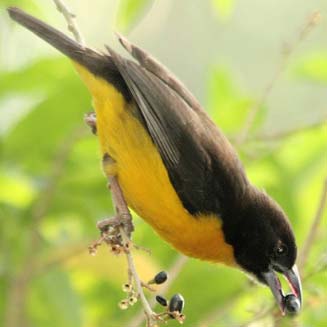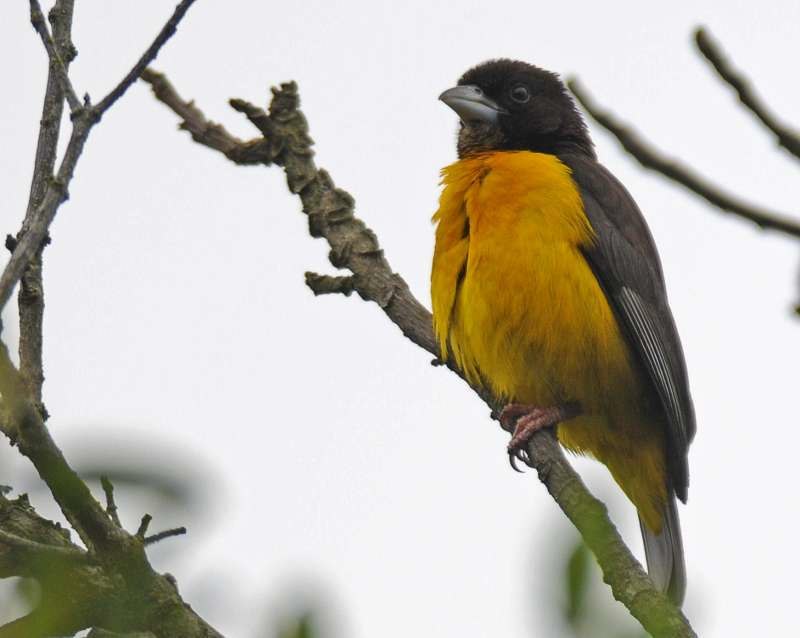
Ploceus bicolor
SUBFAMILY
Ploceinae
TAXONOMY
Ploceus bicolor Vieillot, 1819, ‘Senegal’ = South Africa.
OTHER COMMON NAMES
English: Forest weaver; French: Tisserin bicolore; German:
Waldweber; Spanish: Tejedor Bicolor.
PHYSICAL CHARACTERISTICS
5.5 in (14 cm); female 1.0–1.3 oz (29–36 g), male 1.1–1.6 oz
(32–46 g). Upperparts dark, underparts golden yellow. Bill
dark with blue-gray rims. Eye brown or red in different
regions. Sexes alike. Juvenile duller than adult, bill light
brown.
DISTRIBUTION
Nigeria east to southern Sudan and eastern Africa, south to
eastern South Africa but absent from Botswana, Namibia.
HABITAT
Forested areas and dense riverine vegetation, subtropical
thicket.
BEHAVIOR
In pairs throughout the year, small family parties after breeding.
Joins mixed-species flocks. Song a musical duet, heard at
all times of the year.
FEEDING ECOLOGY AND DIET
Insects, mainly gleaned from branches, bark, and tangled
vegetation in mid-story of forest. Also fruit and berries, and
nectar.
REPRODUCTIVE BIOLOGY
Monogamous, solitary nester. Often returns to same site, so
several old nests may be in close proximity. Nest is retortshaped
with broad entrance tunnel pointing downwards;
suspended at tip of branch or creeper. Woven of thin vines
and creepers, appears rough and always looks old and dry.
Lays two to four eggs in summer. Incubation 15–17 days,
fledging 22 days. Probably both sexes incubate; both feed
young.
CONSERVATION STATUS
Not threatened, but dependent on preservation of well-wooded
habitats.
SIGNIFICANCE TO HUMANS
None known.
Other popular Animals
Photo Gallery of - Dark-backed weaver




 Animalia Life
Animalia Life